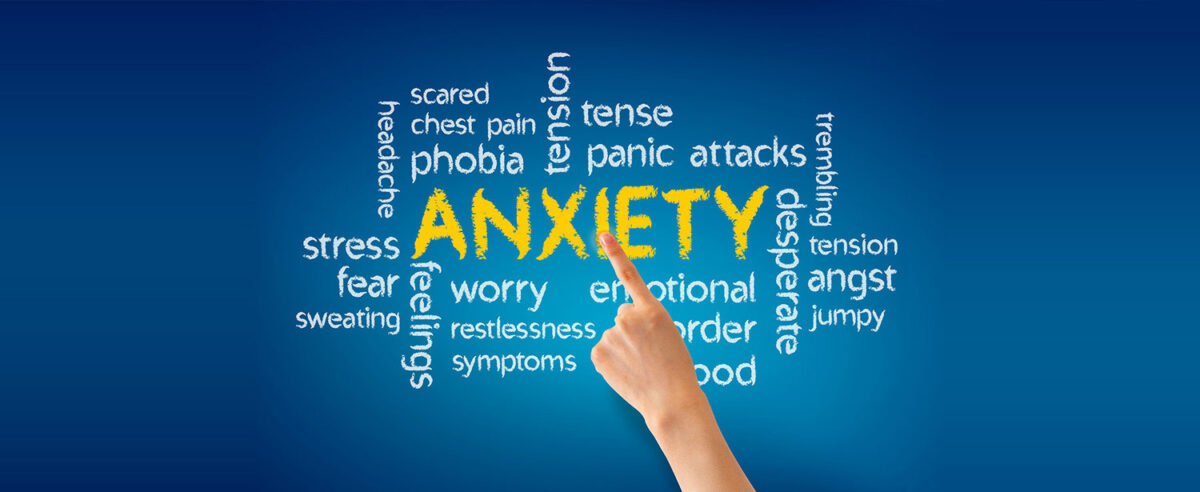
Anxiety is a common experience, affecting millions of people worldwide. It manifests in various forms, from generalized anxiety disorder to panic attacks and social anxiety. The impact of anxiety on daily life can be profound, interfering with work, relationships, and overall well-being. While medication and therapy are traditional treatments, self-help tools like “The Anxiety Workbook: Practical Exercises for Relief” offer accessible and effective ways to manage anxiety. This article delves into the core principles of the workbook and explores practical exercises designed to provide relief.
Understanding Anxiety
Before diving into the workbook’s exercises, it’s essential to understand what anxiety is. Anxiety is a natural response to stress, characterized by feelings of worry, nervousness, or fear. It can be a normal reaction to challenging situations, but for some, it becomes a chronic condition. Anxiety disorders can cause significant distress and impair daily functioning. Common symptoms include excessive worrying, restlessness, fatigue, difficulty concentrating, irritability, muscle tension, and sleep disturbances.
The Role of Cognitive Behavioral Therapy (CBT)
“The Anxiety Workbook” is grounded in the principles of Cognitive Behavioral Therapy (CBT), a widely used and effective treatment for anxiety disorders. CBT focuses on identifying and changing negative thought patterns and behaviors that contribute to anxiety. The workbook provides structured exercises to help individuals recognize their anxiety triggers, challenge irrational thoughts, and develop healthier coping mechanisms.
Practical Exercises for Relief
Identifying Triggers
The first step in managing anxiety is understanding what triggers it. The workbook includes exercises to help individuals identify situations, thoughts, or behaviors that cause their anxiety. Keeping an anxiety journal can be particularly useful. By recording instances of anxiety, individuals can begin to see patterns and identify specific triggers. For example, one might notice that social situations or deadlines at work are common triggers.
Challenging Negative Thoughts
Negative thought patterns, or cognitive distortions, play a significant role in anxiety. These can include catastrophizing (expecting the worst), black-and-white thinking (seeing things as all good or all bad), and overgeneralizing (making broad conclusions based on a single event). The workbook provides exercises to help individuals identify these distortions and challenge them. For instance, if someone believes, “I always mess up in meetings,” they can be guided to examine evidence that contradicts this thought and develop a more balanced perspective.
Relaxation Techniques
Relaxation exercises are crucial in managing anxiety. The workbook offers a variety of techniques, including deep breathing, progressive muscle relaxation, and mindfulness meditation. Deep breathing exercises involve inhaling slowly through the nose, holding the breath for a few seconds, and then exhaling slowly through the mouth. This helps activate the body’s relaxation response. Progressive muscle relaxation involves tensing and then slowly relaxing different muscle groups, promoting physical relaxation and reducing anxiety.
Exposure Therapy
Avoidance of anxiety-provoking situations can reinforce anxiety. Exposure therapy is a technique where individuals gradually face their fears in a controlled and systematic way. The workbook guides individuals through this process, starting with less anxiety-provoking situations and gradually working up to more challenging ones. For example, someone with social anxiety might start by initiating small talk with a coworker and gradually work up to attending a social event.
Developing Healthy Coping Strategies
The workbook emphasizes the importance of developing healthy coping strategies to manage anxiety. This can include regular physical exercise, maintaining a balanced diet, getting adequate sleep, and engaging in activities that bring joy and relaxation. Exercise, in particular, has been shown to reduce anxiety by releasing endorphins and improving mood.
Setting Realistic Goals
Setting and achieving realistic goals can help individuals feel more in control and reduce anxiety. The workbook provides exercises to help individuals set specific, measurable, achievable, relevant, and time-bound (SMART) goals. For example, instead of setting a vague goal like “reduce anxiety,” a more effective goal might be “practice deep breathing exercises for 10 minutes each day.”
Building a Support System
Social support is crucial in managing anxiety. The workbook encourages individuals to build and maintain a support system of friends, family, and professionals who can provide emotional support and practical assistance. It also includes exercises to improve communication skills and assertiveness, helping individuals express their needs and set healthy boundaries.
Mindfulness and Acceptance
Mindfulness involves focusing on the present moment without judgment. It can help individuals become more aware of their thoughts and feelings and reduce the impact of anxiety. The workbook includes mindfulness exercises, such as mindful breathing and body scan meditation. Acceptance, another key component, involves accepting anxiety as a part of life rather than constantly fighting it. This approach can reduce the struggle and help individuals manage anxiety more effectively.
Implementing the Workbook in Daily Life
Consistency is key when it comes to managing anxiety. The exercises in “The Anxiety Workbook” are designed to be integrated into daily life. It’s important to set aside regular time for these exercises and make them a part of the daily routine. Starting with small, manageable steps can make it easier to stick with the program and see progress over time.
The Importance of Professional Support
While “The Anxiety Workbook” is a valuable tool, it is not a substitute for professional help. Individuals with severe anxiety or co-occurring mental health conditions should seek support from a mental health professional. Therapists can provide personalized guidance and support, helping individuals navigate the challenges of anxiety more effectively.
Conclusion
Anxiety can be a debilitating condition, but with the right tools and strategies, it is manageable. “The Anxiety Workbook: Practical Exercises for Relief” offers a comprehensive and practical approach to managing anxiety. By identifying triggers, challenging negative thoughts, practicing relaxation techniques, and developing healthy coping strategies, individuals can take control of their anxiety and improve their quality of life. Regular practice and commitment to these exercises can lead to lasting changes and greater resilience in the face of life’s challenges. Remember, managing anxiety is a journey, and it’s okay to seek support along the way.